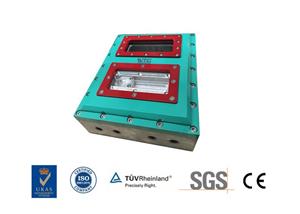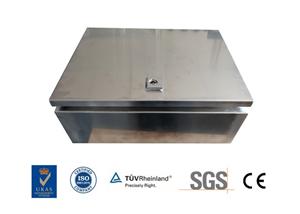Use and maintenance skills of hydraulic machinery and equipment
The use of hydraulic system
(1) Keep the hydraulic oil clean, check it frequently and change the oil regularly. The fuel tank should also be kept clean and cleaned regularly.
(2) Remove the gas entering the hydraulic system at any time to prevent the system from crawling and causing oil deterioration. The oil in the oil tank must exceed the lower limit of the oil standard. If the oil is insufficient, it should be refilled in time.
(3) The oil temperature of the hydraulic system should not be too high, generally within the range of 30-80℃, otherwise it will be unfavorable to the work. When the system is not working, the hydraulic pump must be unloaded.
(4) When the hydraulic pump is started for the first time, it can be started and stopped, repeated several times to increase the oil temperature, and then enter normal operation. If the hydraulic pump has abnormal sound during work, stop and check immediately.
(5) Always check the working conditions of hydraulic cylinders, hydraulic motors and various valves. If there is any problem, it should be eliminated in time.
2. Acceptance and commissioning of hydraulic machinery
New or repaired hydraulic machinery or hydraulic components must be carefully checked for acceptance before being officially put into use, and then tested. Make sure that the hydraulic components or hydraulic system are working properly before they can be put into production.
(1) Acceptance inspection before use
Check whether all components of the hydraulic system are complete and whether they are damaged, especially whether the hydraulic hoses and elbows are damaged; whether the dust cover or screw plugs on the hydraulic components are complete. Prevent dirt and impurities from being brought into the hydraulic system.
Check whether the installation of hydraulic components and their pipe connections are correct and reliable. For example, whether the oil inlets of various valves are connected wrongly, whether the population, outlet and rotation direction of the hydraulic pump are consistent with those marked on the pump. Particular attention should be paid to check the fastening of the bolts of the oil suction pipe joints to prevent people from inhaling air.
Check the positioning and movement of the reversing valve handle at various positions. The positioning and return mechanism should work reliably and operate flexibly. Check the fuel tank for impurities and dirt, and clean it thoroughly if necessary. Pay attention to add hydraulic oil to the specified oil level. Check whether the hydraulic pump and hydraulic motor are obstructed during normal operation.
(2) No-load test run
The purpose of the no-load test is to comprehensively check whether the hydraulic system and various hydraulic components work normally and reliably under no-load conditions, and whether the movement of the actuator meets the requirements.
When starting the test run, control the engine speed at about 50% of the rated speed, so that the hydraulic pump is in the unloaded state (the reversing valve handle is in the neutral position). Run to check whether the pump is working properly and whether there is abnormal noise; observe the oil circulation in the tank to see if there is an air suction system; observe the temperature rise of the hydraulic pump. After a period of time (approximately 10-15min), make the engine run at the maximum speed, and continue to check the working condition of the hydraulic pump. After making sure that everything is normal, proceed to the next check.
Operate the reversing valve to make the hydraulic cylinder reciprocate several times, or make the hydraulic motor run at a certain speed to discharge the air in the hydraulic system. Observe the operation and check whether there is oil leakage at each component, pipeline and joint.
Check whether the reversing valve operates reliably in various positions.
After the hydraulic system has been running at no-load for a certain period of time (about 30min), check the oil temperature rise. The oil temperature should not exceed the specified value (generally working oil temperature is 35-60°C). Carry out a load test after eliminating all faults in the no-load test run.
(3) Load test run
Load test to check whether the hydraulic system can achieve the predetermined work requirements; check the smoothness of the movement and commutation of the working parts, and there should be no crawling, vibration and impact.
Load test run should be run under lighter load at the beginning, and then run at full load. During operation, check for external leakage, abnormal noise, and oil temperature rise after continuous operation. Remove all faults during the test run and make sure that everything is working properly, then drain all the oil in the oil tank and filter it out, clean the oil tank, and fill the specified hydraulic oil before putting it into production.
3, the fault diagnosis method of the hydraulic system
Empirical diagnosis
Relying on the actual experience of operators and maintenance personnel to judge the failure of the hydraulic system is a simple way to find the failure of the hydraulic system on site. Look: It can be found that the hydraulic cylinder has crawling vibration, weakness, large natural settlement, hydraulic motor rotation mechanism can not rotate, slow weakness, slippage during braking, running mechanism deviation, can not walk, oil discoloration, emulsification and external leakage And other failure phenomena. Listen: Abnormal sound of hydraulic pump and hydraulic motor, squeal of overflow valve, hydraulic shock from the system and pipe vibration can be found. Smell: It can distinguish oil deterioration and hydraulic pump sintering. Touch: It can judge the oil temperature, the vibration degree of the components and pipe fittings, and the tightness of the fastening screws.
Principle Diagram Analysis Method of Hydraulic System
Analyze the faults of the hydraulic transmission system according to the schematic diagram of the hydraulic system, find out the location and cause of the fault, and propose the method of troubleshooting. The hydraulic system diagram analysis method is currently the most common method used by engineering and technical personnel.
Precision diagnosis
On the basis of the simple diagnosis method, various detection instruments are used for quantitative analysis. The diagnosis items include pressure detection, flow detection, temperature rise detection and noise detection.
Troubleshooting of hydraulic system
For hydraulic machinery that fails, the cause of the failure should first be identified. Common faults include external and internal leakage of hydraulic cylinders. The external leakage is obvious, and the internal leakage should be judged by experience. The cylinder is weakly extended, and the cylinder closes quickly or slowly. After working for half an hour, touch the surface temperature of the oil cylinder with your hand, and the temperature of the internal drain cylinder has increased significantly. At this time, the internal oil seal needs to be replaced. The pressure drop of the hydraulic pump and the drive motor cannot reach the maximum load, and the work is weak. This kind of work failure is in addition to the drop in the engine power. Under normal circumstances, the pressure of the hydraulic working pump is usually reduced, the pressure safety valve is out of control, and the surface of the oil pan in the drive motor Caused by wear. It should be determined according to the specific situation. The most common is the burst of high-pressure tubing. Don't try to make money when replacing it. Do not use fake tubing. The high-pressure hydraulic pipes produced by the official national manufacturers are all with a steel wire layer and have a regular production number.




